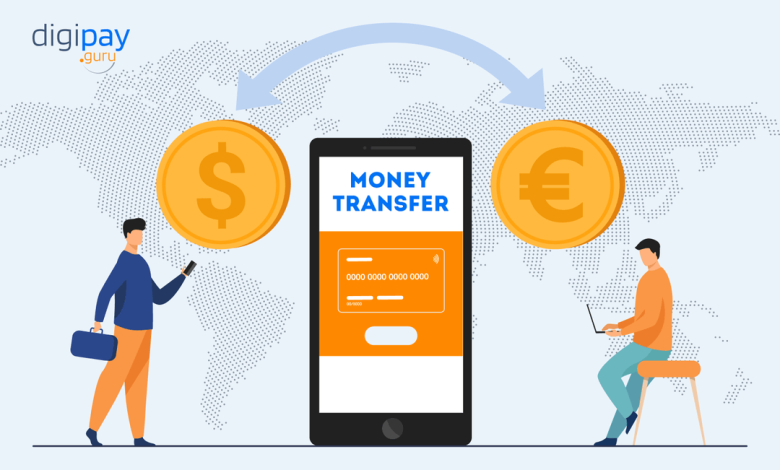
As the future is so dependent on technology, it’s time now to be digitally smarter with International Money Transfer amenities to enhance and maximize organization.
Following the removal of COVID-19 travel limitations, more and more nations are opening their borders, and this trend is also seen in the payments sector. The epidemic advanced open banking boosted the global digital economy and raised the demand for cross-border payments when traveling was impractical.
The rise of eCommerce, globalization, and digitization has transformed how people shop globally, resulting in a truly global market. Cross-border payments are seen by 87 % of global merchant executives as having the most significant growth potential, according to the Visa GME report. Almost a third of their revenue comes from cross-border trading.
What is Cross-border payments?
Any transaction when the payer and the payee are in separate countries is referred to as a cross-border payment; these transactions can be made by individuals, businesses, or financial organizations.
Customers of businesses that offer digital sales include not just local but also international customers who can, of course, make purchases at any time and from any location in the world.
Which Forms of Cross-Border Payment are Most Popular?
Each location has its preferences for payment methods. For instance, in North America, credit cards are the most popular payment method, whereas mobile wallets are the payment method with the most incredible growth in Southeast Asia. Even though cash-based transactions, such as cash-on-delivery payments, are still the most common payment method in Africa, mobile money transfer service M-Pesa has experienced rapid growth.
The most common forms of cross-border payments are:
- Credit Cards
- Cash
- Paper Checks
- PayPal and other digital platforms
- Wire Transfer
- ACH Payments
Credit Cards:
A credit card is one of the primary methods for cross-border payments. They offer a practical, affordable alternative to speed up transactions and float cash. Additionally, card payments may be conveniently traced at month’s end with a print or electronic statement. Usually, these payments are more convenient in B2-B businesses.
Cash:
Pay with cash is the most accessible approach to complete a transaction and keep your transaction costs to a minimum. Cash is king and sometimes makes cross-border transactions easier than other payment methods. The primary benefit of paying cash is that, unlike a line of credit, there are never any yearly fees. Additionally, if the funds are not present, they are not spent, and interest is never charge.
Paper Checks:
Companies are still paying other firms with paper checks, even though this practice has significantly decreased over the previous ten years. Although convenience-hungry customers might choose speed over security, this is not the case when making a payment to another company. Speed is typically less critical when dealing with other merchants.
PayPal and other digital platforms:
Utilizing a website from a well-known fintech company is another type of cross-border digital payment solution. Perhaps you are familiar with businesses like:
- M-Pesa
- Orange money
- Google pay
- Venom
- Skrill
The most widely used form of payment worldwide is PayPal. On the other hand, cross-border remittance solution in Africa is the mobile money transfer service. With an estimated 48 million customers, M-Pesa has experienced substantial growth. In addition to Tanzania, South Africa, Afghanistan, Lesotho, the Democratic Republic of the Congo, Ghana, Mozambique, Egypt, and Ethiopia, M-Pesa is now available in Kenya, where it was first introduced.
Wire Transaction:
Cross-border transactions are made more accessible by wire transfers, a digital form of payment. For e-commerce and other digital transactions, businesses frequently use wire transfers for real-time payments. Wire transfers are the best option for companies that must transmit amounts abroad. As soon as the money reaches the receiving account, it is immediately accessible.
ACH Payments:
Another type of cross-border digital payment that is quicker and more effective than traditional methods is ACH or Automated Clearing House. ACH payments are excellent for recurring cross-border payments since they are so straightforward. A routing number and bank accounts are used to transfer this transaction from one entity to another electronically.
Trends of Cross-Border Payment in 2022
Several behavioral factors are altering the cross-border payment landscape. In response to the COVID-19 pandemic, customers switched to online shopping, increased their spending per purchase, and demanded more from companies, including faster delivery and lower transactional friction.
Digital wallet usage has increased in tandem with mobile e-commerce. The most common payment option in France, Germany, Russia, Spain, and the UK in 2020 was a digital wallet, which accounted for 26.4% of e-commerce payments in Europe.
By 2024, it’s predicted that e-wallets will be used in up to 30% of European e-commerce transactions, contributing to their continued dominance. With transaction values exceeding $6.6 trillion in 2021, the Cross-Border Payment payments market is anticipated to maintain its unprecedented expansion.
New and Persistent Challenges
Effective payment orchestration is complicated for large businesses that service numerous markets, each with its banking environment and rules. Smaller companies struggle with having the resources and sales tactics needed to participate in the global payments market. According to the Visa study, small business CEOs are less inclined to link their growth strategy to overseas sales because a mistake could have more severe repercussions.
Second, it might be tricky to reconcile several currencies for revenue accounting and to estimate settlement dates for cross-border payments. Exchange rates may be confusing to end-users, which may prevent them from completing a transaction. Thus, businesses must make sure they use the appropriate payment options for each region.
What are the welfares of using Cross-Border Payment?
Cross-border payment alternatives enable businesses to offer customers a variety of well-liked regional payment choices, resulting in a more individualized customer experience. Additionally, most cross-border payment solutions are mobile-compatible, enabling retailers to pay supplier invoices from any device and location.
Moreover, intelligent scheduling enables merchants to schedule invoice payments. With the help of tools, retailers can increase the size of their global suppliers, affiliate networks, and clientele. Cross-border payments allow businesses to profit from this sector’s explosive expansion. Hence, the Cross-border amount is increasing, and it is expected to grow with a double-digit CAGR of 28.4% by 2027.
Choose a strategy appropriate for the stage of development your firm is in by considering the stage it is currently in. Consider using like-for-like processing with the international payment processing solution as your company grows and becomes more technically proficient. Putting in place a more complex strategy will increase the profitability and scalability of your company.



